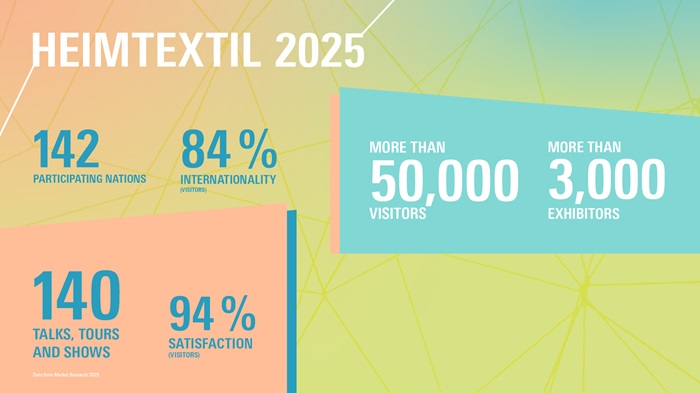
Bangladesh’s historic state-owned Muslin Cotton Mills has reopened in Gazipur district after the ownership was transferred to Masers Reefat Garments Company.Production was stopped at the largest muslin cotton mill in Asia in 1990 for its failure to pay wages and salaries to its 2,885 workers amid serious mismanagement.
Set up on 100 acres of land on the bank of river Shitalakhya in Kaliganj in 1952, the mill once had three sections — spinning, looming and dyeing.Before its closure, the company used to make fabrics and yarn out of cotton.Speaking at a function to reopen the closed textile mill,Abdul LatifSiddiqui, Minister of Jute and Textiles, said after 24 years of closure the government took an initiative to reopen the historic cotton mill.The Muslin Cotton Mills would generate employment opportunities for 25,000 people in the Gazipur district.
About 50 Turkish textile factories are relocating to Ethiopia. They will be housed in an industrial zone. One such company is Ayka Addis. This is a 25-year-old Turkish international garment firm in close contact with all major garment manufacturers in Turkey. Ayka inaugurated its factory at a cost of $140 million near Addis Ababa, in 2010, creating jobs for more than 10,000 people. It has the capacity to export textile products worth $100 million per annum.
The relocation is expected to create $2 billion worth of export revenue per annum and more than 60,000 job opportunities in Ethipia. The Ethiopian textile and clothing industry has experienced a major expansion drive and several leading retailers are now sourcing their textile and clothing requirements from the country. The list of retailers sourcing from Ethiopia include retailers like Tesco, Primark and H&M. Presently around 10 per cent of Ethiopia’s textile and clothing exports are to the UK.
The government has set a target of attracting around $1.6 billion in foreign direct investment by 2016 to facilitate the construction of around 200 new textile and clothing units. For expansion, the industry would mainly focus on increasing domestic cotton output. Ethiopia has about three million hectares of land suitable for cotton cultivation.
A recent report‘Road to 2025: Textile and apparel sector report’, China and India will be the major growth centres for apparel consumption by 2025. The combined size of the Chinese and Indian apparel markets is slated to become bigger than that of US and European Union (EU).“The combined apparel market size of China and India will become $740 billion by 2025, and is expected to surpass the combined market size of US and Europe, which will be $725 billion in 2025,” states the report.
At present the size of apparel market in China and India is estimated at $150 billion and $45 billion, respectively. Both have shown robust growth, despite global uncertainties and slackened demand, says the report.
From 2007 to 2012, the Chinese market posted an annualized growth of 15 per cent whereas the Indian market registered a somewhat lower growth at 12 per cent. However, both have performed better than the other major consumption regions (US, EU and Japan) where the economic conditions led to lower growth in demand.
“Asia has already emerged as the largest manufacturer-supplier hub for textile and apparel products to the world, and the region is on the verge of entering into a new phase wherein its own consumption of textile and apparel products would become large,” the report states.
It goes on to say the key reasons for apparel consumption in the two countries to grow are high economy growth, and consumer income, market development supported by expansion of domestic brands, which have the bandwidth and exposure to go deep into the markets, and high growth of online retail in these countries.
The report also suggests that the consumption level in countries would grow, as the Chinese consumer’s changing preference to buy more for fashion than replacement purpose would increase and Indian consumer’s growing exposure to organized retail and branded merchandise would also increase.
Chinese textile manufacturers are competing to secure import quotas for well-priced and high quality cotton, as the government pressures them to use more expensive lower quality domestic supplies.The spread between Chinese and imported cotton has hit China's textile industry hard. It’s one major reason Chinese manufacturers are becoming much less competitive in the global market.
In January, the Chinese government imposed a 3:1 rule on manufacturers. By which they had to use three tons of Chinese cotton to secure quotas to buy one ton of imported cotton. The quality of Chinese cotton is much lower than that of imported cotton, which generates more losses in production.
The goal is to reduce the size of the eight million tons of stocks the Chinese government has bought to assure sufficient local supplies. The policy is already weakening the price of China-made cotton, but with farmers demanding high prices, it is still higher than foreign cotton.
The International Cotton Advisory Committee has warned cotton prices are expected to rise in the 2013-14 season, despite cotton stocks heading towards a new high. The inter-governmental group blamed stockpiling by the Chinese government, and the expected tightening of stocks outside of China.
On July 15 about 100 cotton and textile professionals gatheredin New York for a one-day conference titled, ‘A Dialog on China's Cotton and Textile Industry Evolution.' Liu Hua, General Counsel for the China National Cotton Reserve Corp. (CNCRC)provided some general guidelines and insight about CNCRC’s business development plans. China currently has a 163per cent stocks-to-use ratio of cotton and is estimated to have 63 per cent of the current world reserves. Huaadds, “The current state of affairs is abnormal. We are trying to reduce inventory but need more time. Consumption needs to be increased, as more and more farmers become city dwellers.
He went on to add the China does not want cotton production to decrease too quickly. And it will take at least three more years before China’s consumption use to ratios will improve.Hua said CNCRC will create a dedicated logistics company "in near future," which will oversee cotton storage and transportation. China currently relies heavily on railroads to get fibre from the production areas in the northwest to the mills in the east, but the intention is to increase the use of highways for better flexibility.
At the end of his presentation, Hua said CNCRC pledges to be more transparent and open in its operations.
The combined apparel market of China and India will grow to $740billion by 2025 -- surpassing the projected combined US and European market of $725billion at the time. This was revealed in a recent report by India-based management consultants Wazir Advisors, 'The Road to 2025'. The report estimates that in 2025 the global apparel market will cross the $2 trillion mark from the current value of $1.1 trillion.
The report released at Texcon 2013, organized by Confederation of Indian Industries (CII), also points out that intra-Asia trade of textile and apparel will grow from $180billion in 2011 to $350billion by 2025. And it said India's export share in this market would grow 3.5 times from its current value of $12billion.
The report added that while China will remain the world's biggest clothing exporter, growth in domestic demand is expected to outpace exports.Also Chinese output growth will slow from today's 7 per cent to 5-6 per cent per annum by 2025. This will lead to an annual global shortfall in production compared to demand estimated to exceed $100billion.
And with China's increased focus on domestic consumption and rising costs, other exporting countries such as India, Bangladesh, Pakistan and Vietnam will have an opportunity to gain global export market share, the report said.
Li & Fung, the most important company that most US shoppers have never heard of has long been on the cutting edge of globalization, chasing cheap labor to garment factories first in China, then elsewhere in Asia, including Bangladesh.
Now, with sweatshop disasters drawing international scrutiny, business is looking up for the next best place such as South America or sub-Saharan Africa where it can steer apparel buyers seeking workers to stitch clothes for a few dollars a day.
As the world's largest sourcing and logistics company, Li & Fung plays matchmaker between factories in poor countries and vendors in affluent countries, finding the lowest-cost workers, haggling over prices and handling over the logistics for roughly a third of retailers found in typical US shopping malls.
Hong Kong-based Li & Fung is a merchandiser who does not own any clothing factories, sewing machines and fabric mills. Its chief asset is the 15,000 suppliers in more than 60 countries that make up a network so sprawling that an order for 500,000 bubble skirts that once took six months from drawing board to store shelf, now takes six weeks at a sliver of the price. That scale gives Li & Fung tremendous clout.
But in pioneering and perfecting the global hunt for ways to produce clothing more quickly and cheaply, Li & Fung, which had $20 billion in revenue last year, has been described by critics as the garment industry's ‘sweatshop locator’.In Bangladesh, Li & Fung has been tied to several calamities. It arranged the production of clothing for Kohl's at one factory where 29 workers died in a fire in 2010. It brokered some work at another in 2011 where more than 50 workers who made Tommy Hilfiger clothing were injured and at least two died in an explosion and a stampede.And last year, Li & Fung was responsible for some garments produced at the Tazreen Fashions factory, where 112 workers died last November after many of them were ordered to continue working even though fire alarms had sounded.
Garment exports from India has seen a 12.13 per cent increase in June. As per AEPC’s data release for the month of June, “Apparel exports were to the tune of $1,240 million in June 2013-14 with an increase of 12.13 per cent against the corresponding month of last financial year. In rupee terms, exports have increased by 17 per cent in June 2013-14 over the same month of previous FY.
In the FY 2012-13, exports in dollar terms declined by 6 per cent from the previous FY and totaled to $12,923 million in April-March 2012-13.Export in dollar terms for three months of the fiscal 2013-14 has increased by 11 per cent over the same period of previous FY and reached to $3,561 million however, in rupee terms exports increased by 15 per cent compared to the same period of last FY. In April-June 2013-14 in rupee terms apparel export of India was to the tune of Rs19, 918 crores compared to Rs. 17,342 crores in April-June 2012-13.
On imports from India by the US, A Sakthivel, Chairman, AEPC says, “Apparel imports of the United States witnessed an increase of 3.7 per cent in the Jan-May of 2013 from the previous year and amounted to $30.6 billion.”India’s export to EU for Jan-May 2013 amounted to $2.5 billion with a decline of -1.1 per cent compared to the same period of previous year, AEPC chairman observed.
Apparel Export Promotion Council, under the aegis of Ministry of Textiles, Government of India in active collaboration with Embassy of India, Japan, participated with 136 companies, constituting over 20 per cent share in overall participation in JFW International Fashion Fair, Tokyo from 17th – 19th July, 2013.
ZohraChatterji, Secretary (Textiles) inaugurated the ‘India Pavilion’ on July 17, 2013 at Tokyo, Japan. The Indian Pavilion witnessed over 1900 buyers and the business negotiated / done was US$ 32.4 million.
Chatterji had detailed interaction for increasing India’s textile and apparel exports with Shimomoura with various Japanese officials. She also chaired a seminar on ‘Growing India – Japan Cooperation in Textiles and Clothing Sector’ in the presence of leading textile and clothing stakeholders of Japan.Garment exports during the period 2012 were $ 293 million as compared to $270 million in 2011, posting a positive growth of 8.11 per cent. First time visitors were hopeful of generating business in the long term. Considering this, it is expected that the overall growth in business with Japan may be over 10 per cent.
Chatterji also launched Fair Promotion Plan for Japanese buyers for the forthcoming international textile and apparel fair ‘Tex-Trends India’ to be held from January (20-22, 2014) at PragatiMaidan, New Delhi.
Textiles exports to Japan from the world isworth $41540 million. Apparel exports were worth $3,2073million in 2012. India’s exports of textile were worth $485 millon.











